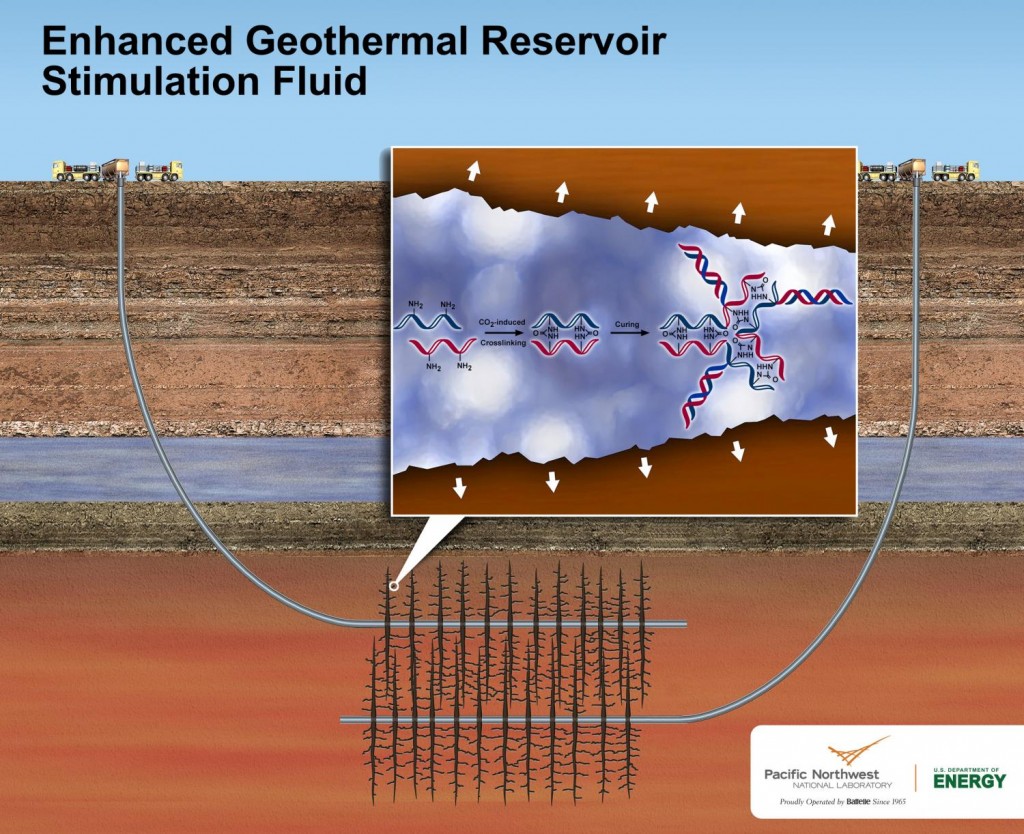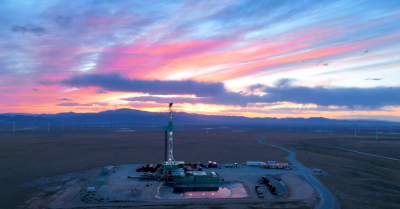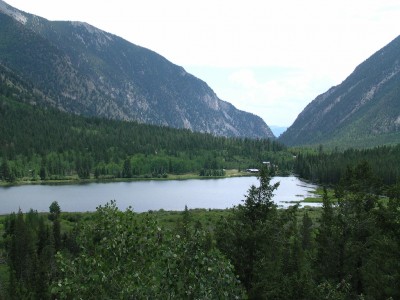New fluids could help improve EGS development
New fluids could help improve EGS development 17 Apr 2015 New fluids could help improve EGS development Picture: EGS Stimulation Fluid Diagram by the PNNL & US DOE (Source: Phys Org) This new fluid is an environmentally friendly polymer that could reduce in half the usage of water and greatly decrease the cost of power generation of EGS.
In a very interesting and lengthy article in Phys Org, Enhanced Geothermal Systems (EGS) have some issues that drag their development but a new solution could help to cut the massive amount of water required to enhance the wells and general costs. The article proposes the use of a new earth friendly fluid that increases the volume of the operating fluid reducing the need of water and decrease the costs of power generation from these sources making them more accessible. The following are some of the main points in the article.
The new reservoir stimulation fluid features an environmentally friendly polymer that greatly expands the fluid’s volume, which creates tiny cracks in deep underground rocks to improve power production. This fluid could also substantially reduce the water footprint and cost of enhanced geothermal systems. A paper describing the fluid has been published by the Royal Society of Chemistry in an advance online version of the journal Green Chemistry.
“Our new fluid can make enhanced geothermal power production more viable,” said lead fluid developer Carlos Fernandez, a chemist at the Department of Energy’s Pacific Northwest National Laboratory (EPNNL). “And, though we initially designed the fluid for geothermal energy, it could also make unconventional oil and gas recovery more environmentally friendly.”
PNNL’s fluid is a solution of water and 1 percent polyallylamine, a chemical made of a long carbon chain with nitrogen attachments that’s similar to well-understood polymers used in medicine. The fluid is pumped into a well drilled at a geothermal hot spot. Soon after, workers also inject pressurized carbon dioxide, which could come from carbon captured at fossil fuel power plants.
Within 20 seconds, the polyallylamine and carbon dioxide link together to form a hydrogel that expands the fluid up to 2.5 times its original volume. The swelling gel pushes against the rocks, causing existing cracks to expand while also creating new ones. The expansion is expected to cut in half the amount of water and time needed to open up an enhanced geothermal reservoir, which shrinks the cost of power generation.
To read the full article, please follow the link:
Source: PhysOrg


















